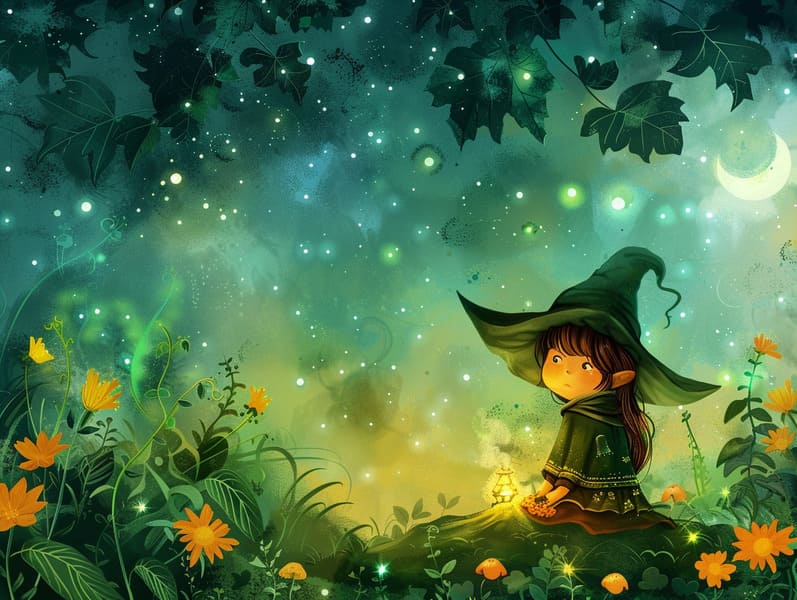Exploring the Roots of Bedtime Fairy Tales and Its Timeless Loveliness.
Exploring the Roots of Bedtime Fairy Tales and Its Timeless Loveliness.
Blog Article

Historical fairy tales have ancient roots. These stories have been recounted from one generation to the next well before they were ever put on paper. They sprang from a variety of civilizations, including Indigenous traditions. They were initially disseminated among elders, often carrying themes and messages reflective of the societal norms and beliefs of the time.
Jacob and Wilhelm Grimm, Jacob and Wilhelm Grimm, were among the first to assemble many of these beloved stories. Their compilation, "Grimm's Children's Stories," included stories like "The True Bride," "Hansel and Gretel," and "Schneewittchen," which have since become classics in the world of children's fairy tales. Similarly, Andersen's magical fairy tales, such as "The Sea Maid," and "The Story of the Ugly Duckling," have floated into hearts worldwide, cementing their place in the pantheon of treasured fairy tales.
Though they are old, these stories remain as meaningful as ever, especially as children's bedtime stories. These whimsical stories are now available in different formats, including vibrantly illustrated books, enchanting animations, and free fairy tales online.
Their enduring popularity can be linked to several fascinating points:
Vital Lessons: Timeless fairy tales often impart important moral lessons. Narratives like "The Shepherd Boy and the Wolf" teach the value of sincerity, while "The Hare and the Tortoise" stress the merits of persistence and humility. These narratives offer kids clear distinctions between virtue and vice, helping to shape their moral compass in a gentle yet significant way.
Warmth and Understanding: Fairy tales frequently feature figures facing challenges and struggles, inciting kids to identify with their struggles and champion their triumphs. For instance, "The Story of Beauty and the Beast" reveals the significance of looking beyond appearances to perceive the true nature of a person, encouraging empathy and recognition.
Cultural Recognition: Many classic fairy tales are imbued with the cultural contexts from which they emerged. Learning from these stories can provide intriguing perspectives into different traditions, cultivating a sense of global appreciation and acknowledgment.
Creativity and Fantasy: The fanciful elements in fairy tales—enchanted objects—enhance children’s innovative ideas. These tales guide readers to fantasy realms, fostering fantasy-filled thoughts and a sense of fascination that stays a lifetime.
Old fairy tales are not only whimsical but also teaching. They act as whimsical tools in fostering various cognitive and affective skills in children. When timeless fairy tales are recited, they promote verbal development by showing new lexicon and intricate sentence structures. This practice also fosters hearing abilities and concentration, as little ones remain attentive, anticipating to see what happens next.
Furthermore, contemplating the themes and characters of old fairy tales can develop thinking skills and reasoning skills. Kids are led to recognize patterns, foresee events, and make sense of cause and effect. These reflections also facilitate the young utter their thoughts and feelings, fostering their emotional intelligence.
In today’s high-tech era, the accessibility of online fairy tales has made these tales more acquirable than ever. Web platforms and web apps make available broad selections of ancient fairy tales that can be experienced or listened through anytime, anywhere. Fairy tales read aloud are particularly well-liked, making available an fascinating method for young ones to relish these charming tales. Sound books and read-out-loud videos guide characters and settings to life, often enhanced by magical harmonies and instrumentals that boost the story adventure.
The timeless appeal of ancient fairy tales lies in their ability to transform to today's world while staying true to their main lessons. Contemporary get more info reimaginings of these fairy tales often incorporate more inclusive protagonists and modern settings, making them relatable to today’s audience. However, the main ideas of courage, sympathy, and honesty remain unchanged, continuing to impact children of all ages.
Classic fairy tales also offer a sense of calm and predictability. They grant access to a organized narrative with a plain beginning, middle, and end, often winding up with the settlement of conflicts and the triumph of goodness over badness. This reliability can be relieving for little ones, affording a sense of dependability in an dynamic world.
Timeless fairy tales continue to allure and educate new generations, maintaining their elegance and importance in modern society. As bedtime stories for kids, they grant a perfect blend of allure and teaching, facilitating moral values, empathy, and creativity. The accessibility of digital storybooks and the likability of fairy tales voiced ensure that these traditional fairy tales remain attainable to new generations.
By keeping and relating these fairy tales, we continue to acknowledge the rich tapestry of creativity and cultural heritage. Whether you are discovering a beautifully illustrated book, perusing a electronic library, or listening on an read-aloud book, the elegance of ancient fairy tales is always within reach. These narratives demonstrate of the perpetual impact of stories and its ability to gather us across epochs and places.
No matter if you are discovering a gorgeously illustrated book, experiencing a virtual collection, or listening on an read-aloud story, the delight of popular fairy tales is always within reach.
These stories point out of the unchanging spell of stories and its ability to unite us across generations and cultures, forming a connection that captivates and teaches alike.